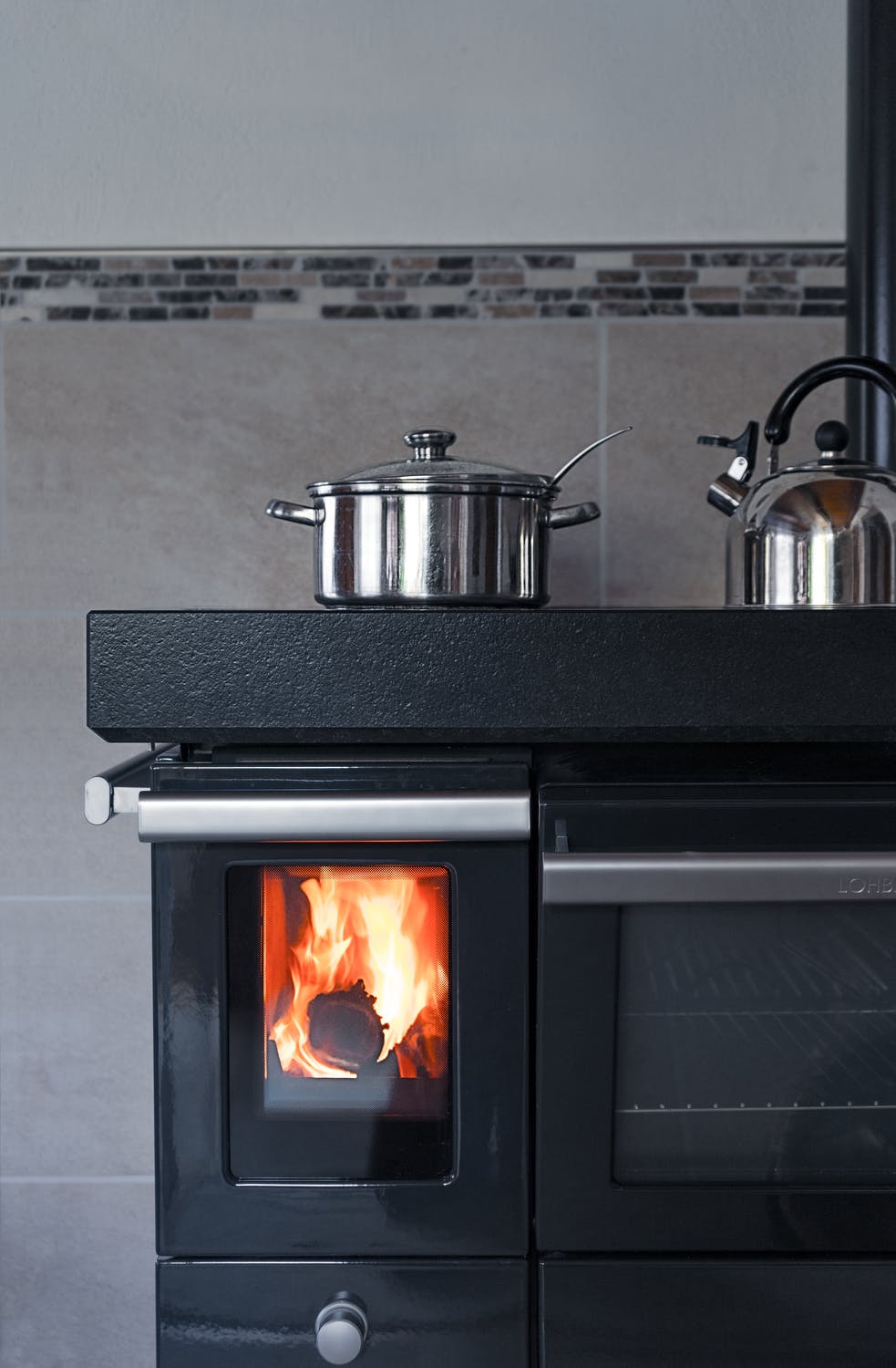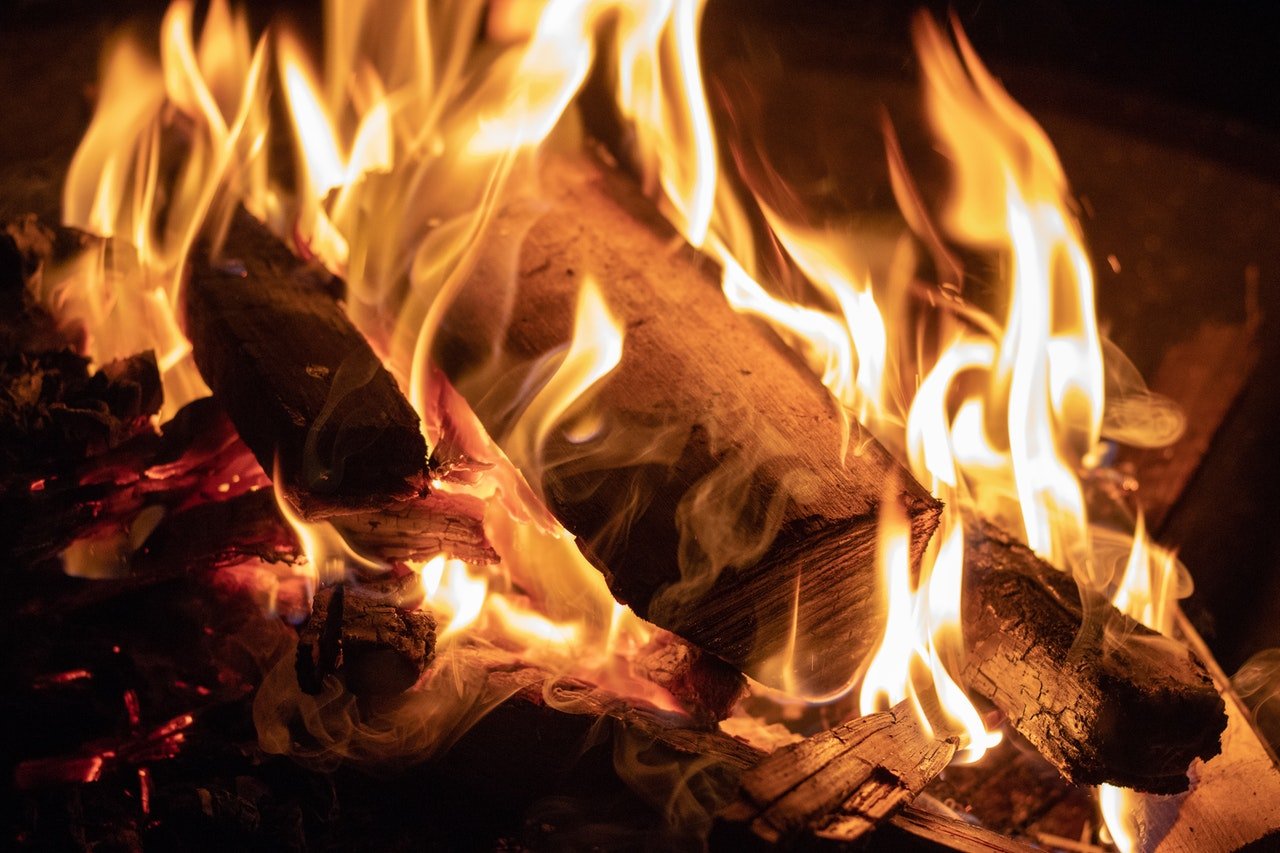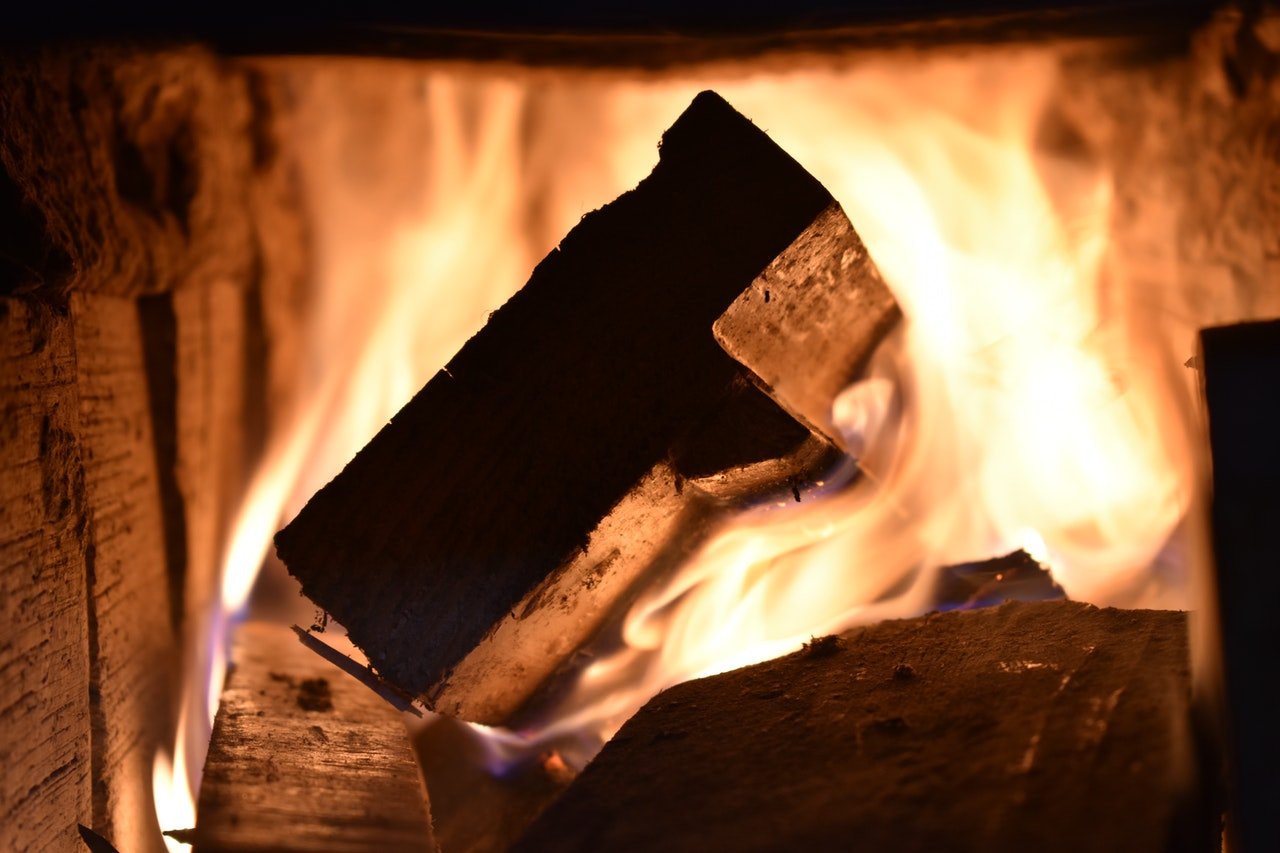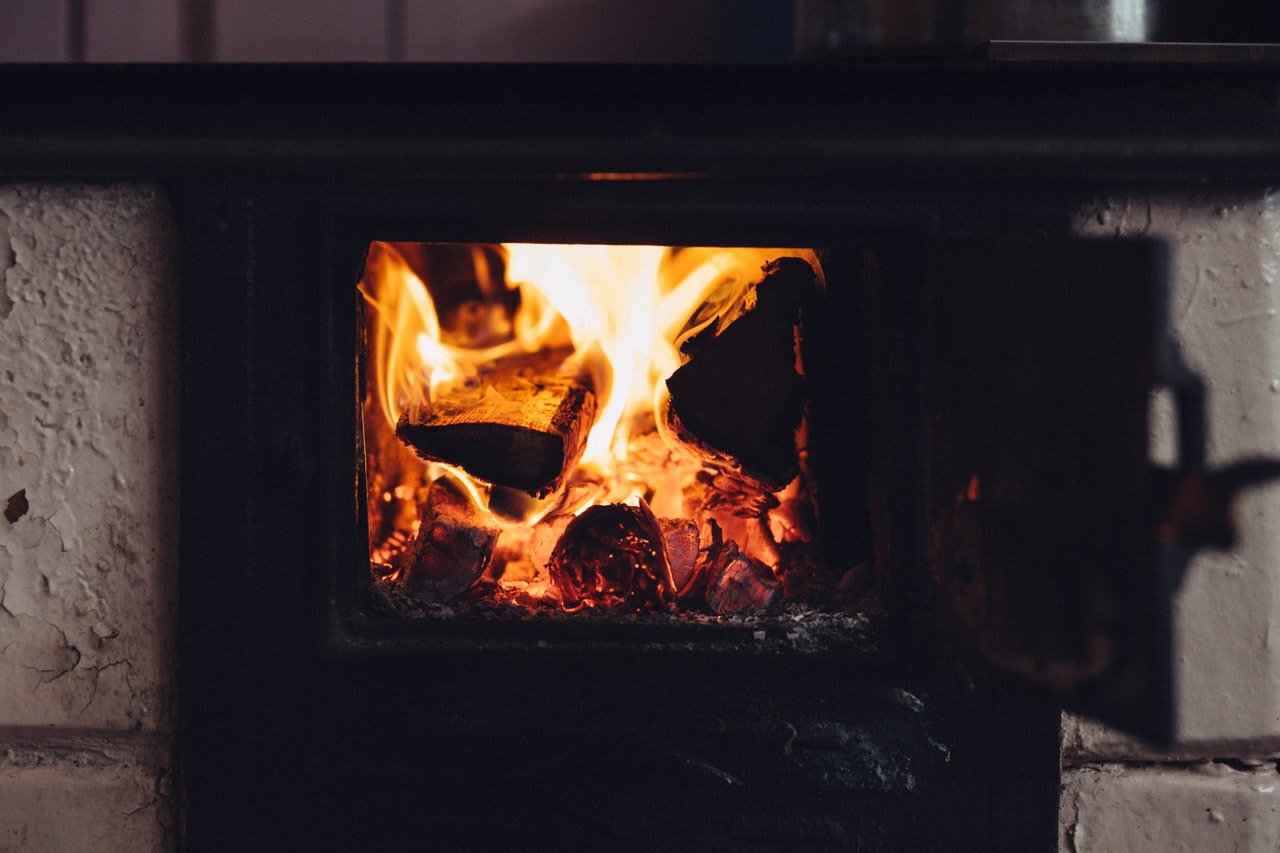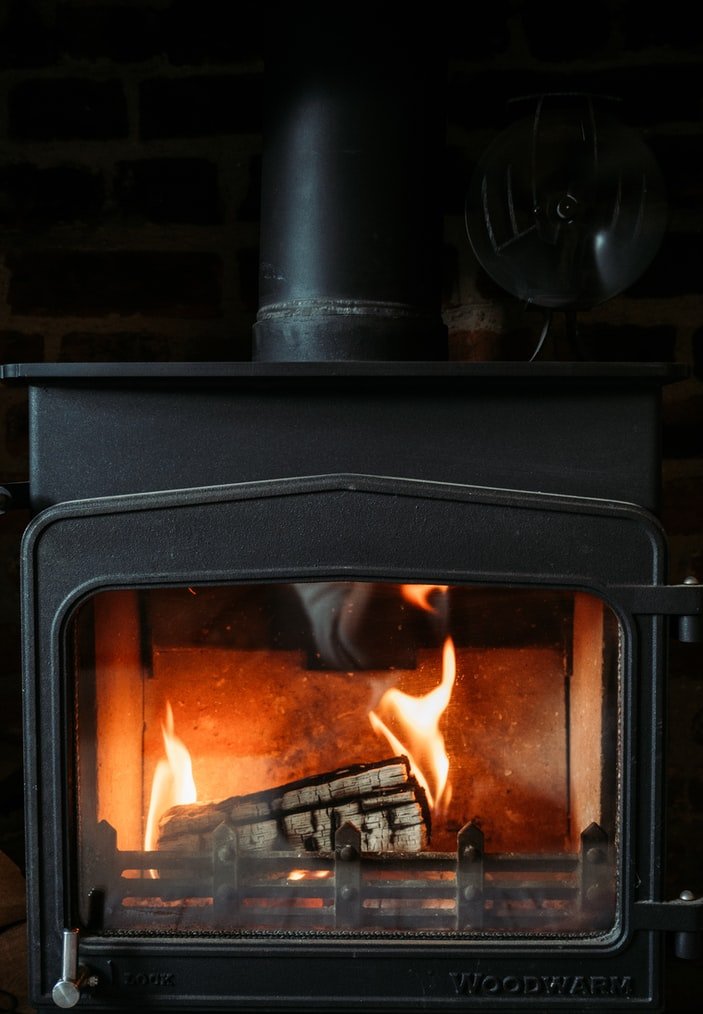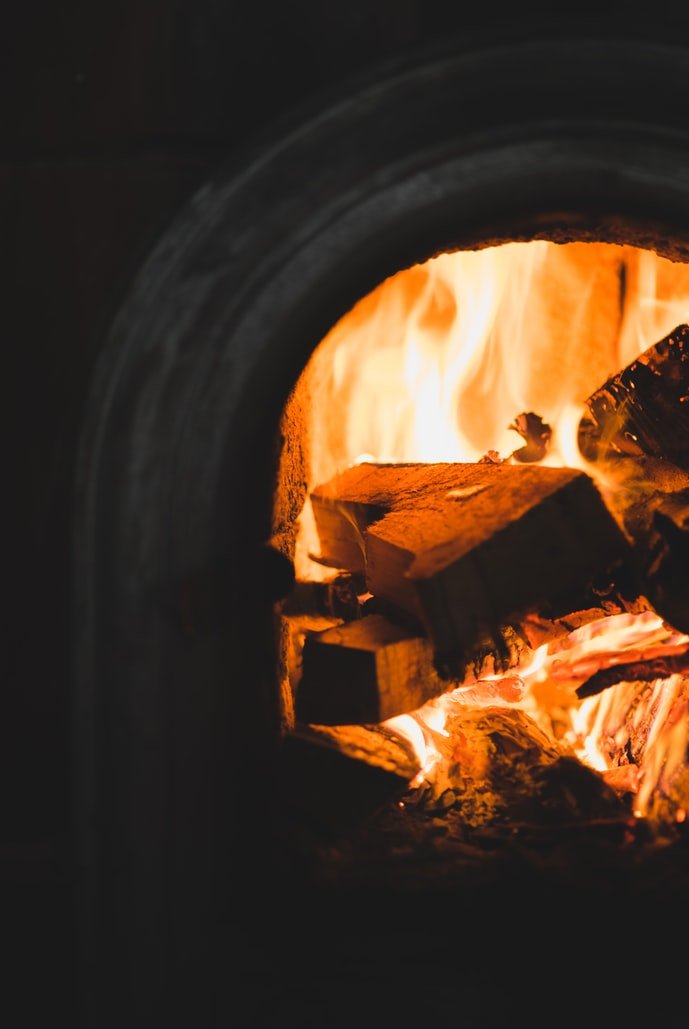4 Common Wood Stove Problems and How to Solve Them
While wood stoves are great, they can be rather tricky to use. This is because there are a slew of different problems that wood stove users often encounter. Despite how complicated they may seem, these problems are relatively simple to overcome as long as you know what you’re doing. This is why we thought it would be useful to put together a brief article discussing this topic. If you want to learn more about this, read on as we list down four common wood stove problems and how to solve them.
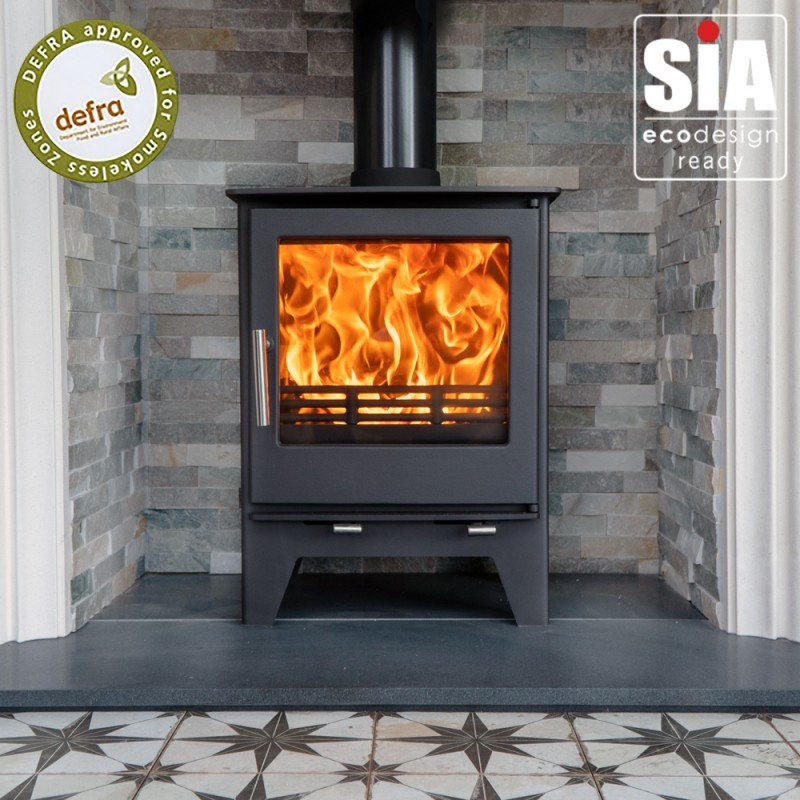
Wood Stove Is Not Lighting
The most crucial element to lighting your stove is starting the fire correctly so it lasts for hours. To start a fire in your wood stove and prevent it from going out, make sure the draft is open, the air is entering the wood stove, and the appropriate fuel (a fire starter/kindling) and wood (1-2 logs) are burning correctly. Aside from what we’ve already mentioned, make sure that you’re using dry firewood and that the vents are allowing air to flow through them.
Wood Stove Is Not Staying Lit
For some people, keeping the stove lit can be quite tricky. Luckily, this problem is rather easy to fix as long as you know what you’re doing. To help keep a fire going in your wood stove, make sure you're only using low moisture content fuel, ideally under 20% moisture content. Wet wood is harder to burn and can lead to a fire that keeps going out, or a smokey fire that isn't hot enough. If you’re already using wood with the right moisture content, check on your vents and make sure they are open enough to give the right amount of oxygen to help the fire in your stove stay lit.
Wood Stove Is Producing Too Much Smoke
There are a slew of reasons why your wood stove is smoking ranging from using wood that’s too wet or complications with your vents. The only way to fix the smoking problem is to figure out the reason for the smoking and fix it. If the source of the problem is the wood, then it would be best to use wood that’s drier. If the events are the problem, make sure that they are open so the fire gets enough oxygen to burn through the wood in your stove.
Wood Stove Is Not Drafting
Drafts in a wood stove are caused by heat moving upward and pulling more cold air down the flue. Building a large fire to start the draft is an easy way to get the wood stove burning stronger. To maximize the draft in a wood-burning stove, one must start the draft with a sufficient source of heat, such as matches or even a small fire.
Conclusion
We hope this article proves to be useful when it comes to helping you resolve any problems that you may be having with your wood stove. As you can see, these common wood stove problems are quite manageable as long as you approach them in the right way. Be sure to keep everything that you’ve learned here in mind so you can fix any issues you may be having with your wood stove.
Do you need help with your wood stoves in Scotland? Stove Scotland has got what you need! We will work with you to ensure that your stove will perfectly fit the style and dimensions of your room. Contact us today to learn more
Beginner’s Guide on How to Correctly Use a Wood Stove
While wood stoves sound good in theory, some of you may have no idea on how to operate them. To help you out with this, we thought it would be useful to put together a brief article discussing this subject. If this is something that you want to learn more about, read on for a beginner’s guide on using a wood stove.
How Do Wood Stoves Work?
To truly understand how to correctly use a wood stove, it’s important to educate yourself on how they work. Some of you may think that a wood stove is just a simple firebox with a flue outlet. That’s not entirely accurate as there is more to a wooden stove than just that. A feed at the base provides the right amount of oxygen to the firebox and feeds the fire. The main chamber is also enclosed in high-intensity insulation, so it’s easy to keep the fire stoked. And lastly, there’s a fluid-operated air valve that controls how much oxygen reaches the firebox. When it’s fully open, it provides maximum airflow, which stokes a roaring fire, but when it’s fully closed, the fire dies down. To make sure that wood burning in the stove doesn’t suffocate and go out, or to avoid filling your space with fumes, there has to be a place for the smoke to go. This is addressed through the use of the chimney.
What Type of Wood Should You Use?
Not all types of wood are appropriate for a wood-burning stove. Selecting the correct type of fuel for a wood-burning stove is like selecting the correct fuel for any other appliance: it needs to be suitable for the task at hand. This can be a difficult task due to the sheer number of choices you have. Indeed, there are so many types of wood available in stores and different varieties of wood feature unique characteristics that can either help or hinder their ability to fuel a stove.
The best type of wood to burn in your wood stove is to mix both a variety of soft and hardwoods, this provides the best results in heat output and efficiency. Among the top wood types in the UK are ash, apple, oak, birch, and beech. Each one requires a longer seasoning time than others, but they also have a more intricate interior structure that enables them to burn for a longer period of time.
How Should You Stack the Wood?
One of the easiest mistakes to make when creating a wood stack inside in readiness to light your stove is to simply pile the wood as tightly within the unit as possible. In many cases, the mistake is made because people think that the more wood they have burning, the better. In reality, stacking the wood in a tight stack doesn’t help and actually hinders the stove. Ideally, it would be wise to start with just a few logs stacked in a cross pattern so that there are spaces between each log for sufficient airflow to get through. The airflow will allow the flames to produce more heat and burn longer than usual, increasing efficiency and reducing how much wood needs to be burned.
Once you’ve set up the logs the right way, it’s important to light your stove properly. Be sure to light your stove in the right way to maximize efficiency and effectiveness. When lighting your wood stove, it would be best to start from the top. This is to ensure that it burns downwards.
Conclusion
We hope this article proves to be useful when it comes to helping you use your wood stove effectively. As you can see, wood stoves aren’t that difficult to work with as long as you know what you’re doing. Feel free to look back on this article if you ever need a little more help in figuring things out.
Are you looking to buy the best log-burning stoves in Scotland? Stove Scotland has got what you need! We will work with you to ensure that your stove will perfectly fit the style and dimensions of your room. Contact us today to learn more
How You Can Save Money and Energy Using a Wood-Burning Stove
It might come as a surprise to some, but investing in a wood-burning stove can save you on fuel expenses. Instead of relying on your heating system to make your house warmer, you can lower your thermostat and use a wood-burning stove to stay cosy. It’s even possible for you not to use your furnace at all and use your stove to warm yourselves up. No matter what heating method you use, it’s always best to maximise your savings.
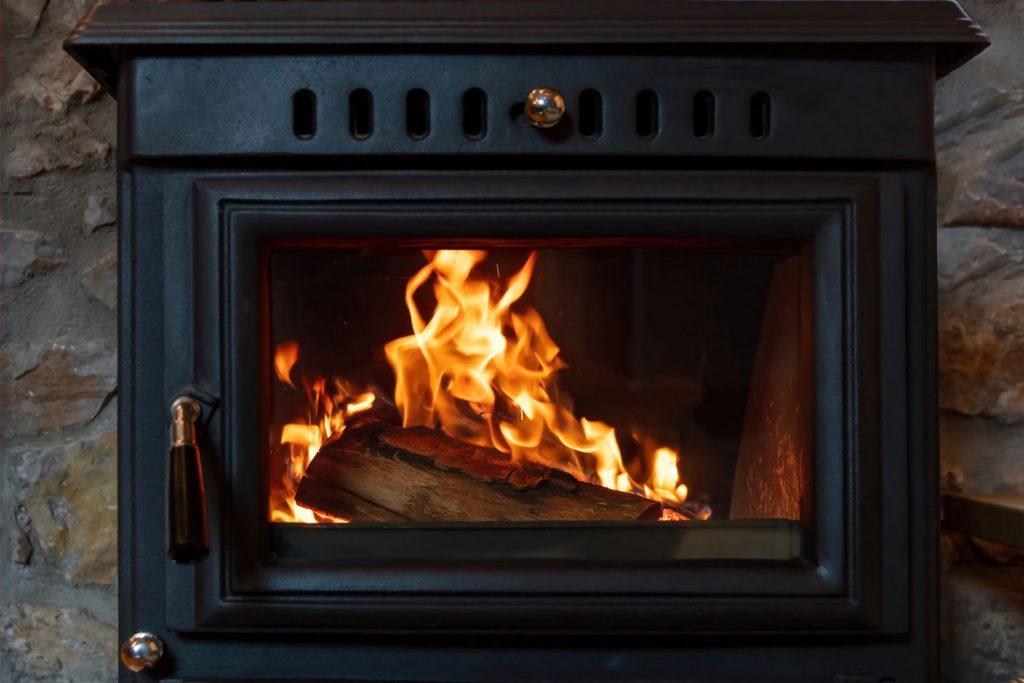
How Can a Wood-Burning Stove Help You Save Money?
1. Choose the Right Stove
Old wood stoves are not as efficient as new ones. This means they will need more fuel to heat your living spaces properly. As such, it is best to invest in an up-to-date wood stove in Scotland. Ones with EPA certification keep emissions low and are certainly more efficient than those that don’t.
2. Pick the Right Size for Your Living Space
It is always best to choose log-burning stoves appropriately sized for your living space. If you buy one that is too small for your home, it will not be able to keep you warm enough. However, if your wood stove is too big, you’ll end up running it on low most of the time. This means you’ll burn more fuel and even cause black glass. As such, it is best to have a wood stove that can be run on medium to medium-high when you’re at home. You should also be able to turn it to low when you’re asleep.
3. Install the Stove Properly
Proper installation allows you to maximise the benefits of owning a wood stove. When you do so, you will also reduce your wood consumption. Consider the correct venting and placement of your new stove. When installed correctly, you can produce more heat and decrease the time spent tending to ineffective flames. Stove fitters in Scotland can help you with this endeavour.
4. Always Use the Right Fuel
No matter how you acquire your fuel source, you need to ensure that the logs you use are well-dried. You can use a wood moisture meter to ensure that the moisture content of the logs is not higher than 20 per cent. After all, wet wood is hard to start and slow to burn. As a result, instead of keeping you warm, all of the energy will go to drying out the wood.
How Can a Wood-Burning Stove Help You Save Energy?
Log-burning stoves in Scotland are continuously becoming more efficient at heating homes. This heat source produces enough warmth for an entire residence during the coldest days of the year. In fact, a traditional wood-burning fireplace has a heat efficiency of only 10 per cent. On the other hand, a wood stove in Scotland can give three times the amount of heat while only using half of the wood used by a fireplace.
Log-burning appliances, including stoves, are up to 50 per cent more energy-efficient than older, uncertified units. They also burn 30 to 50 per cent less fuel just to produce the same amount of heat. If you happen to have your own wood supply, you will be saving even more money in the process. By planting trees that grow quickly, such as poplar trees, you will have enough firewood to last you for a long time.
Conclusion
A wood stove in Scotland is an excellent addition to any home. You have a reliable and efficient source of heat during winter, and you will also save money and energy whenever you use it. If you are searching for a company that can fit a stove in your home, we have you covered.
Stove Scotland offers the best log-burning stoves in Scotland. We have all the knowledge and skills necessary to fit your desired stove into your house. No matter what the style and dimensions are of your room, our stove fitters in Scotland can find a way to find a perfect fit. If you are interested in our services, contact us today.
Installing a Wood-burning Stove in Your Holiday Home: A Guide
Imagine walking into a holiday cottage and being greeted by the sound of crackling logs and the warmth of an open fire or wood-burning stove. Isn’t that quite the treat?
It would be best for those who own a holiday home to have a wood-burning stove on your property to make your guests feel comfortable. They will surely enjoy getting cosy by the fire, and the heat will also help you reduce how much you spend on heating bills.

If you do plan on installing a wood-burning, you need to keep certain things in mind:
Opt for an Easy-to-Use Wood-burning Stove
You first need to consider whether or not your guests will have an easy time using your wood-burning stove. When choosing one, make sure that there aren’t any complicated valves or settings that are difficult to handle. You should also ensure that the fire can be regulated, allowing it to burn efficiently.
Your fire must be able to burn using easily accessible fuel, such as wood, that can be bought at a local shop. Alternatively, you can give your guests a set amount of fuel. Lastly, your chosen stove should come with an instruction manual that is easy to read and understand.
Think About the Placement of Your Wood-burning Stove
When you’ve selected the perfect stove for your holiday home, you need to consider where you should place it. If it is connected to an existing chimney, it is unlikely for the position to be changed. Make sure that the furniture and any combustibles near the fire are kept at least 40 to 80 cm away. If you can place them even further away from the stove, then that’s much better.
Have a Carbon Monoxide Alarm Installed
A carbon monoxide (CO) alarm is a must for any property. If you have an open fire or wood-burning stove in your holiday home, then it’s even more important to have one installed. CO is an invisible and odourless gas that can be extremely dangerous to humans once inhaled. In fact, it can even be fatal.
Since October 2015, it has been required by law for holiday cottages to have CO alarms installed. If you’re about to put one on your property, don’t forget to put it over or next to the fire to keep the results accurate.
Get Holiday Home Insurance
As a holiday homeowner, you should know how important it is to get your building and possessions insured. After all, although the cottage is your property, you don’t actually live there. A lot of things are beyond your control, including accidents that you did not cause.
Having your property insured is good practice for a holiday home business. This is even more important if you have an open fire or wood-burning stove in your cottage.
Get Your Chimney Serviced Regularly
Before you officially open your holiday cottage to guests, you need to get professionals to service your chimney and wood-burning stove to check if they are safe to use. And once you have opened your home for business, you need to have professional chimney sweeps clean and repair your fixtures as necessary. Between these maintenance services, you need to check your fireplace for any accumulating smoke and soot marks. Don’t forget to empty the ash bin too.
Conclusion
Wood burning stoves are a great way to appeal to potential guests. They provide much-needed heat, and they create a lovely and comfortable atmosphere that is befitting the season. If you own a holiday home and would like to have a stove installed or serviced, partner with the best professionals in the area.
Stove Scotland is the expert on multi-fuel and wood-burning stoves. Our comprehensive knowledge about fires and stoves puts us at the forefront of the industry. We specialise in stove installation and maintenance. We can even fit log burning stoves in Scotland homes that don’t have an existing chimney. If you ever need a professional to do the work for you, then we have you covered. Contact us today!
5 Best Methods to Produce More Heat From a Wood Stove
Wood stoves are one of the best sources of heat in homes, especially during winter. The heat emitted from the heater itself is an excellent way to bring the indoor temperature back to normal, but sometimes it isn't enough. But what can households do to generate as much heat as possible from the heater?

1. Keep the Doors Closed
It's understandable for people to want to crack open the door so that they can see the outdoors while enjoying the heat indoors. However, opening the doors can allow the cold air in and cool up the room again. Never leave an open again, even an inch—it’s best to close it entirely. But if you need to breathe fresh air, open the door only until the desired temperature.
2. Adjust the Flame
Another option people can do to generate more heat is to adjust the flame. Most wood stoves have enough room to accommodate more logs to ignite. As a result, the heater can produce more heat by burning more logs in the process.
First, ignite the wood stove and wait until the flame becomes steady then remove the grates to access the firebox. People can adjust the height of the flame by placing or removing wood pieces to achieve the desired temperature. However, remember to let the flame consume the wood pieces slowly. Adding too many logs at a time can decrease the speed at which they burn, generating heat slower.
3. Fire Up the Fan
The easiest way to amp up the heat in a room is by using a fan near the woodstove. Fans are a good way to add on some heat, especially when the temperature is starting to get a little bit cold. They produce a breeze that can reach a certain distance from the source, which is why they are ideal for bringing the temperature back to the ideal numbers.
Meanwhile, fanning the heater itself should also help with increasing the heat indoors. The idea of using air to make the wood burn faster is a quick yet effective way to boost the temperatures to a level that’s cosy and comfortable.
4. Install Heating System
Another alternative measure to always have heat indoors is to install a heating system. Rather than installing the heating system prior to getting the wood stoves, it's better to install the two together. If you only have the heater, then consider installing the heating system.
Although a wood stove heater is good on its own, it can still produce more heat through a powerful heating system. For homeowners, it’s best to consider the idea of installing a radiator or a thermostat indoors to generate more heat for the property.
5. Build a Chimney
One of the most obvious solutions to supplement a wood stove heater is to build a chimney. A chimney helps by increasing the airflow in the home, making the heat produced by a wood stove feel warmer.
However, the construction of a chimney can become too expensive. Also, there are various considerations needed to ensure that the placement of the amenity can support the house and not ruin its overall integrity.
Conclusion
Although winter is a great time to be at home and chill with family, it is also one of the most difficult seasons to manage. But with the help of a wood stove to produce heat indoors, the holidays will surely become cosier and feel like home.
Stove Scotland is a family-run, father-and-son business that focuses on providing reliable service to clients. Our services include fireplace installation jobs, ensuring our stove installers practice the best and most efficient processes in keeping a house warm. Book an appointment with us today, and let us know how we can help.
Our Easy Guide to Maintaining a Wood Burning Stove
As the weather grows colder, it’s time to take out the wood-burning stove and warm up the home! The winter season is known for its unforgiving coldness, but it can still be an enjoyable time as long as you’re fully warmed up. As such, it’s crucial to ensure that your stove at home is working correctly and ready for the coming months!
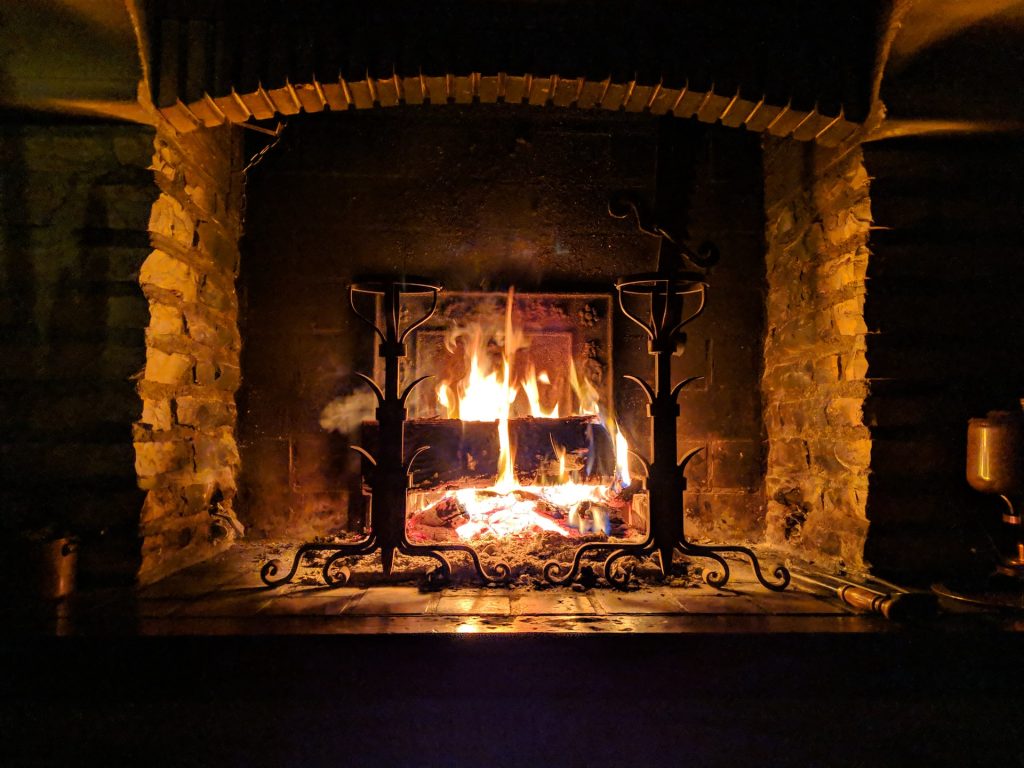
Maintaining your wood stove is vital for keeping the home a safe and happy place during winter. If you want to experience a pleasant winter season and guarantee that your stove will operate safely and efficiently, follow our tips below:
1. Work With Professionals
While it’s crucial to learn how to take care of a log-burning stove yourself, you can’t maintain it alone for the rest of the stove’s lifetime. To keep your wood stove in tip-top shape, you must remember to call for professional stove maintenance from time to time!
Hiring a professional to maintain your wood stove ensures that no accidents will occur. Wood-burning stoves are an excellent source of warmth, but they also pose a threat to your safety! Since wood stoves can cause house fires, they must be properly installed, operated, and maintained.
Although you can do your best to maintain your wood stove, nothing compares to the complete professional maintenance service an expert can provide. When you hire people from a stove company, you can rest assured that they will care for your wood stove.
2. Clean the Interior
Of course, you can’t call a professional to take care of your wood stove every few weeks or so because that would be expensive. As such, you must be responsible for maintaining your wood stove when you aren’t expecting professional stove maintenance.
The burning of wood in your stove creates a lot of deposit and buildup—the accumulation of dirt, dust, creosote, and ash will make it more difficult for the stove to burn efficiently and cause the stove to look less presentable. To allow your stove to burn well and appear more presentable, you must clean its interior!
Cleaning the interior should never be overlooked, mainly because the buildup of creosote and other materials can pose a danger to your home. When the fine particles travel through the air, they could be inhaled, causing several airborne diseases.
In addition, having a clean wood stove means living in a safer home! Without any buildup in the interior, you won’t have to worry about the stove catching fire unnecessarily.
3. Burn the Right Wood
Besides the wood stove itself, you must also be aware of the kind of wood you’re using! If you want to keep your home warmer for longer, it’s essential to learn about the qualities of different types of woods and how they burn.
Oak, birch, and ash trees are best for stoves since they burn hotter and longer and are easier to handle. Meanwhile, softwood is more affordable, but it can’t promise an efficient burning every time—some don’t produce enough heat and create a lot of smoke and creosote.
Conclusion
A wood stove is great for keeping the home warm while saving money on heating costs! However, having a wood-burning stove also means that you have more responsibilities to uphold. As long as you make sure to maintain your stove regularly, you’ll get to enjoy the warmth it produces for the years to come!
If you want to get your wood stove professionally taken care of, leave the job to our team at Stove Scotland! We offer a full professional maintenance and chimney sweep package so that you and your family will enjoy your stove for a long time. Get a free quote today!
How to Use a Wood-Burning Stove in a Smoke Control Area
You can never have too many warnings when it comes to fire safety. Housefires are one of the leading reasons for a significant portion of deaths worldwide each year, so authorities constantly remind the public to be careful and not play with fire (literally). Aside from reminding the public, authorities also designate certain places as a “smoke control area.”
A smoke control area—also known as a smoke control zone—is an area that’s designated by local authorities where homeowners are strictly prohibited from emitting smoke from their homes. The only exception to the rule is if the homeowner is using an authorised appliance or fuel. For this reason, many homeowners tend to get confused if they can use a wood-burning stove, which can emit a considerable amount of smoke. They’re also burdened with the matter because they simply can’t go out and buy another one.
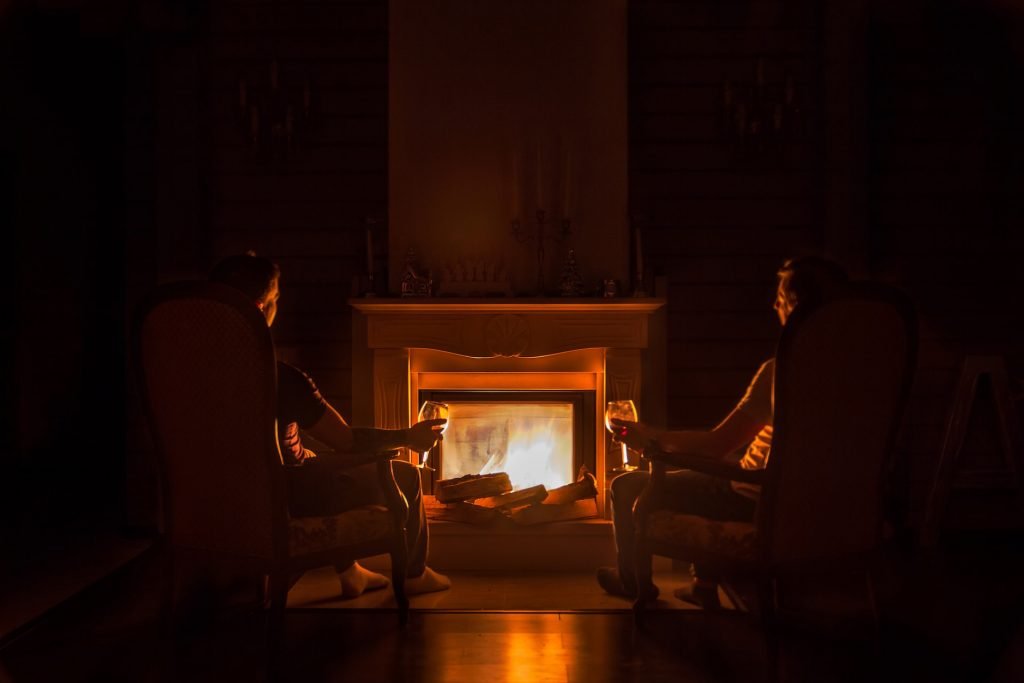
This article will shed some light on whether or not a homeowner can use a wood-burning stove in a smoke control area. Read on below to learn more.
Finding Out If You Live In a Smoke Control Area
It’s pretty easy to find out if you live in a smoke control area because all you need to do is get in touch with the environmental services department of your local council. The reason why smoke control areas came into legislation is simply to maintain healthy air quality.
Burning Wood in a Smoke Control Area
The good news is that using a wood-burning stove in smoke control areas isn’t a blanket ban. Instead, you simply need to follow specific guidelines to use a wood-burning stove cleanly and safely.
These guidelines are as follows:
Using a DEFRA-Approved Stove
The Department for Environment, Food, and Rural Affairs (DERFA) is the UK’s governing body that deals with environmental issues. DEFRA evaluates appliances that can emit smoke, particularly stoves. Using a DEFRA-approved stove means it emits minimal amounts of smoke, making them perfect to use if you’re living in a smoke control area.
To check if a stove is DEFRA-approved, simply look for the DEFRA logo that says “DEFRA approved for Smokeless Zone.” If you don’t know where to find one, you shouldn’t worry because most stove manufacturers in the UK now offer DEFRA-approved stoves as part of their product line.
The Firewood Must Be Dry and Seasoned
If you already have a DEFRA-approved stove, you can go burning wood just yet because the firewood must be the right kind of wood—not wood that you got from your broken furniture or an old fence. These kinds of wood have likely had chemicals applied to them, which releases toxins that violate the law of the smoke control area.
The firewood you must use needs to have a moisture content of 20% or less to avoid emitting excessive amounts of smoke. Luckily, Woodsure’s Ready to Burn wood exists for this reason.
Another Thing You Can Burn: Fuel
Wood is generally the only thing that can burn in a DEFRA-approved stove. However, you can also burn certain types of fuel—as long as your stove is multifunctional. The fuels that can be burned in a multifunctional stove include:
- Anthracite
- Charcoal
- Firelogs
- Smokeless briquettes
Conclusion
We should always look for ways to help lessen the damage already being done to our planet. If you live in a smoke control area, using a wood-burning stove will benefit both you and the environment because it helps lessen the harmful effects of smoke on the environment.
Stove Scotland offers installation services for wood burning stoves in Scotland. We offer different options for stoves alongside various installation packages so you can have the right system that will suit your needs. Contact us today to learn more!
Give Your Home Warmth through a Wood Burning Stove
We could all use more than a little warmth, especially as the cold winter months set in. A great way to do this with style is by using a wood burning stove. It comes in both traditional and contemporary designs alike. Understandably, many people are not sure how to go about picking the ideal wood burning appliance according to what they need.
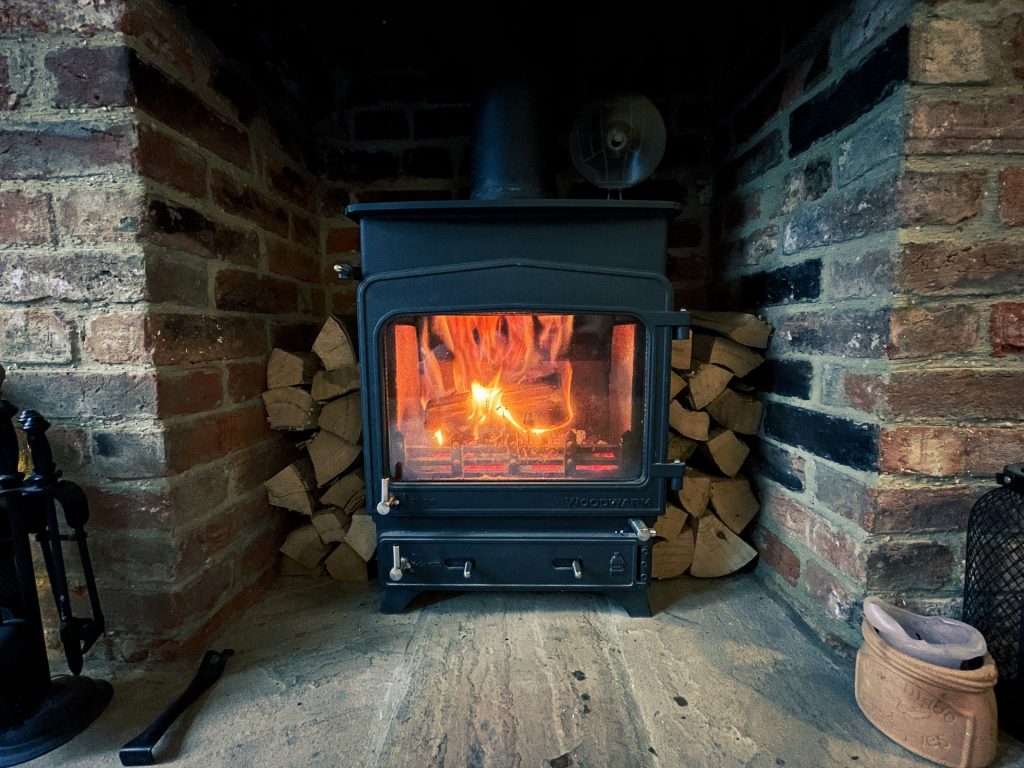
Why Is a Wood Burner Stove the Best Choice?
There are a number of heating appliances on the market, but few strike a balance between being eco-friendly and aesthetically appealing as wood burner stoves do. They come in a number of materials, such as cast iron, steel and even ceramic. It's a beautiful choice for natural warmth and, thanks to viewing panes, a gorgeous view of an authentic, roaring log fire.
It should be noted that fitting a woodburner is notifiable work. This means a qualified engineer should be called in for installation so that building regulations are followed.
The Stylish Choice
For the longest time, when a 'wood burner stove' comes up in conversation, a single picture comes to people's minds. That's the old-school, traditional model: it's a firebox that's matte black on four solid legs, a lot like a table. Whether the home is more of a traditional one or the spaces are contemporary, thankfully, there's a wood burner stove that's available to fit the aesthetic.
People looking for a clean look will benefit greatly from the cassette model: it can fit with a wall and even integrate with a log store!
It can be as subtle as changing the colour of the enamel. A rather sleek white, for example, can get a lovely modern upgrade using a sunny yellow. This way, the overall decor of the home gets a nice lift as well. It also comes as a pedestal or in a wall-mounted version. Double-aspect stoves have been elevated all the way to having designs that are 360°. Fancier models can even give off an illusion of floating.
Needless to say, there are a number of benefits that modern stoves have over the older types. The advancements that have happened over time are geared towards efficiency and giving a better view of the flame.
Heat Output
There's some calculating involved here, but don't worry, it's not algebra. Figure out a rough estimate of the kilowatt (kW) output by measuring the space (L x W x H) in cubic metres, then dividing the result by 14. For a more exact number in terms of output, reaching out to a qualified heating engineer is best.
It's best to avoid timber that's water-logged because those will release plenty of smoke that hinders the warmth or comfort of flame at all.
Conclusion
Wood burning stoves are becoming more and more preferred as of late. Aside from the traditional ones, there are now several models available with improved features. They bring a lot of style and warmth to any home in a sustainable manner with a good amount of heat.
Looking for wood burning stoves? Reach out to Stove Scotland today! We supply top brands such as Askgard, Merlin, Aduro and more. We can’t wait to help find your perfect match, too!
Gas Stove vs Wood Burning Stove: Which One’s Better?
For Scots, the most important thing to consider when choosing between a gas or wood-burning stove is how effectively it can heat their homes. If you live in an area where natural gas is not available, then a wood-burning stove may be your only option for heat. For others, the price of fuel and how easy it might be to get supplies are more important considerations.
So what is the difference between a gas and wood-burning stove? What factors should you consider when choosing one over the other? There are many factors to take into account before making this decision, which will help you decide which type of heater best suits your needs. In this article, we will explore these differences in detail.

Wood Burning vs Gas Stove
Wood burning stoves are a type of heating appliance that burns wood to provide heat for your home. They come in many different shapes and sizes, with the most popular being traditional brick-style designs. The main differences between gas or wood-burning stoves are their efficiency, cost, how much pollutants they emit, and how long it takes them to get up to the appropriate temperature.
Gas has an advantage over wood because it's cheaper and easier to maintain. However, there are some trade-offs when you consider that gas is not as environmentally friendly as wood or other types of fuel like natural gas or propane. Let’s now dig deeper into the pros and cons of each type of stove.
Pros of a Wood Burning Stove
The effect of a real wood-burning stove is beautiful and nostalgic which is why many people like it. Most people think about cozy wintertime with wood-burning stoves not just because of the sight but also because of the burning smell of wood. A lot of gas stove brands recreate the feel of a real burning stove but lack the smell of the real wood-burning stove.
Those living in areas where wood is abundant often prefer wood-burning stoves. Aside from accessibility, wood is much cheaper than propane or natural gas so it’s a great choice to make if you’re considering the price. This kind of stove is not only cost-effective but is also stable in terms of stable heating your entire home. And lastly, you won’t need to worry about power outages, because it doesn’t need one in the first place.
Cons of a Wood Burning Stove
Like the gas stove, the wood-burning stove also has some cons that you need to consider before making a decision. First is, you have to consider the proper storage facilities for a wood-burning stove. You’ll be needing ample space to store the dry logs.
You also need to consider the time and effort to sustain and light the wood-burning stove. You need to manually gather dry logs, light the fire and keep the fire from burning by adding more dry logs. This means you need to keep watch of your stove to make sure that it continuously warms your home. Another thing to consider is the labour in cleaning your chimney and stove regularly.
Whilst a wood-burning stove can be cost-effective by using natural wood instead of natural gas or propane, this kind of stove may become more expensive than a gas stove given all the considerations mentioned in the cons.
If you’re particular with air quality and the detrimental effects of smoke in the body and in the environment, then this wood-burning stove can fail you as it does emit smoke. So if you ever decide to use this kind of stove, then use cleaner fuels and always keep your stove clean.
Conclusion
Choosing the right stove for your home can be a challenge especially when you consider both the pros and cons of the gas and wood-burning stoves. It will all depend on your preference, whether you love the smell of burning wood or if you want to eliminate the smoke. Do you prefer to make your life easy by using a gas stove or would you prefer to manually light the fire using a wood-burning stove? The choice is yours to make but we hope that this article sheds some light on the things you need to consider before making your final decision.
Stove Scotland can help you choose between gas and log burning stoves in Scotland. We supply the top brands of stoves without you worrying if the style and the dimensions of your place can accommodate your stove choice. Contact us today if you’re interested to know more!
What Kind of Wood Works Best for Wood-Burning Stoves?
Nothing beats hearing the crackling sounds of logs burning on high-quality wood-burning stoves. And if you’re searching for wood to feed the fire, you need to know how each burns differently.
This article will break down the best to the worst types of wood to use for your stove.
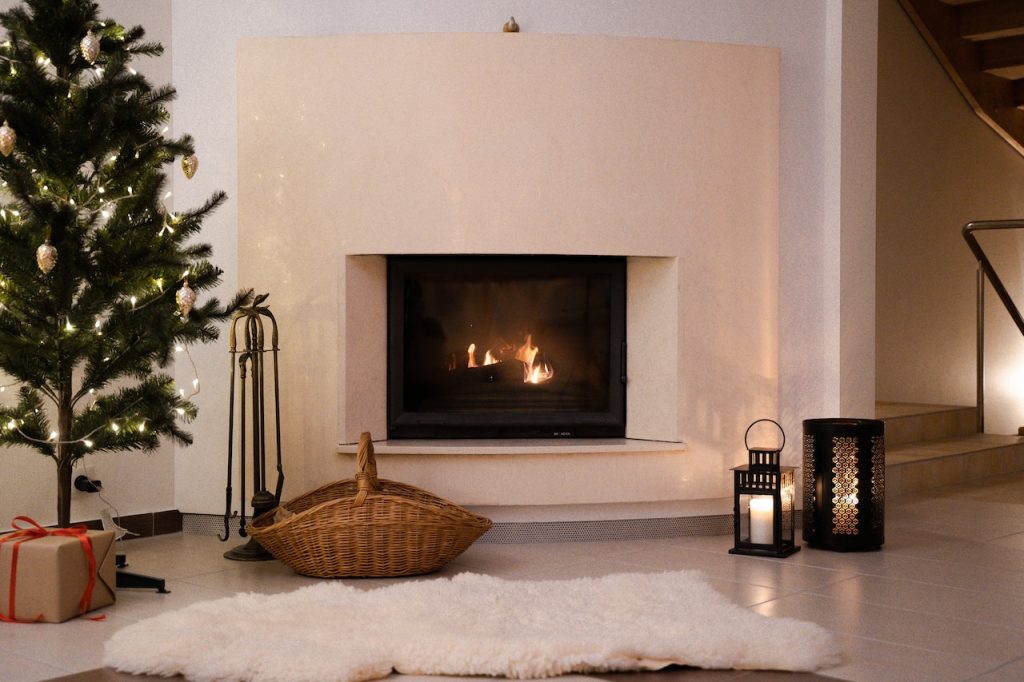
The Ideal Wood
Ash: This is undoubtedly one of the best options for burning. Not only does it create a stable flame, but it also releases a good amount of heat. It is possible to burn ash even if it’s still green. But if you want to get the most out of your log, choose one that is dry.
Thorn: If you are concerned about smoke, then thorn would work best for you. It produces a good heat output and burns slowly.
Beech: This wood is another variant that burns well. However, unlike ash, you cannot burn it during its green phase since it has a high moisture content.
Hawthorn: Are you looking for a wood that has an excellent heat output? Then you should consider the slow-burning hawthorn.
Good Wood
Pine: This wood produces a good flame. However, be mindful of its resin sap, which could accumulate in the flue of your chimney. Clean the resin sap whenever you can to avoid a chimney fire.
Cedar: Cedar creates that classic spit and crackle when burning logs. This can be traced to their porous features and natural oils. Although it doesn’t create a big flame, its fire does last for a long time, producing intense heat. Most people who own wood stoves or love exploring the wilderness often use cedar for kindling.
Oak: This type of wood is widely used in the UK for various projects. It is often used to make furniture, but it also serves as excellent firewood. Oak burns slowly and produces a small flame. If you want the oak to burn well, choose variants that have been seasoned for more than two years.
Birch: This wood can also be burnt when it’s still green. Birch is also notable for producing good heat and having a strong flame. If you’re looking for the best firewood of this type, you should choose yellow birch or black birch. However, keep in mind that birch has many varieties, and not all of them have the same ability when used as firewood.
Adequate Wood
Sycamore: This type of firewood is good enough to produce a decent flame, but its heat output isn’t the best. It also has a high moisture content, so it’s best to use it only when it has been seasoned for a few years.
Elm: This wood provides a decent flame but needs to be dried out for two years or so. Its high moisture content doesn’t make it the best option, but it is still usable as firewood.
Larch: Just like oak and elm, this type of wood needs to be seasoned for years before being used as firewood. Additionally, just like pine, it contains sap that can accumulate in the chimney flue, putting you at risk of a fire. Make sure to clear out sap deposits to prevent a disaster from happening.
Poor-Quality Wood
After going through the types of wood that burn well, we can now discuss which ones produce poor flames. If you can do so, avoid attempting to use the following as firewood:
- Alder
- Chestnut
- Eucalyptus
- Fir
- Holly
- Laburnum
- Spruce
Conclusion
A wood stove in Scotland would not be complete without quality firewood to keep the flame burning. However, not all firewood is made the same. If you want great heat output and an intense flame, make sure to select the best from this list.
At Stove Scotland, we work with customers who want to experience the wonders of having log burning stoves. Scotland and UK locals who are interested in our products and services can always reach out to us. For more details about our wood-burning stoves and installation services, contact us today.

